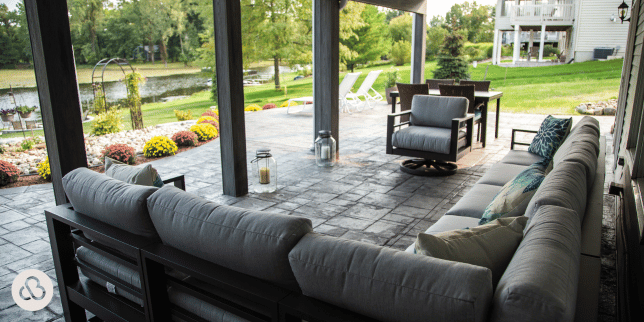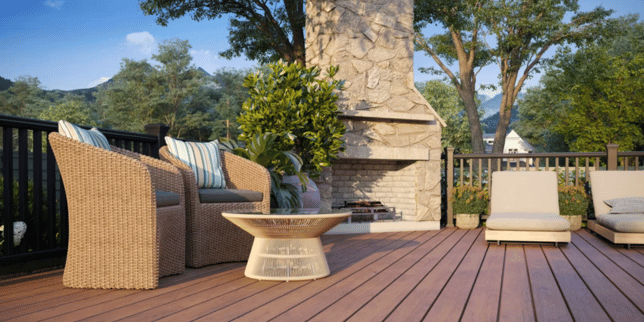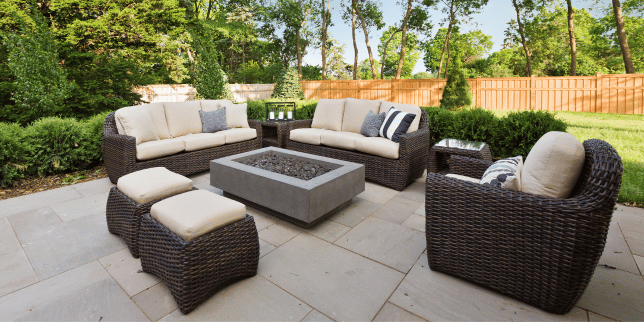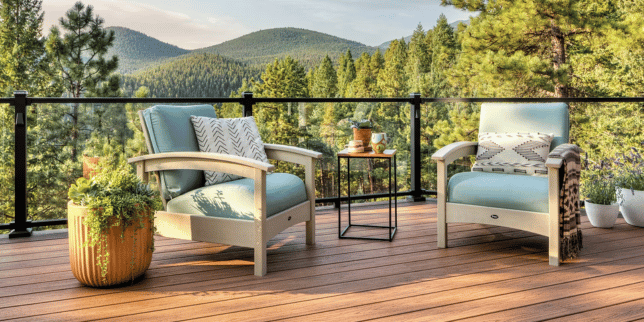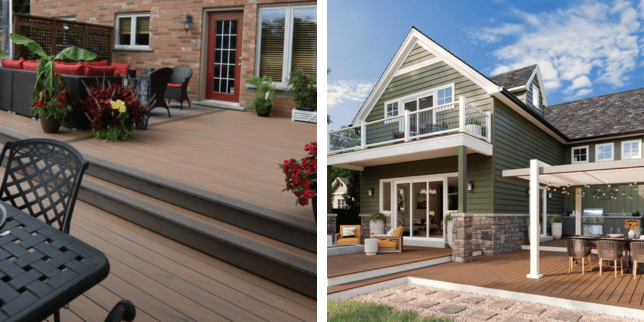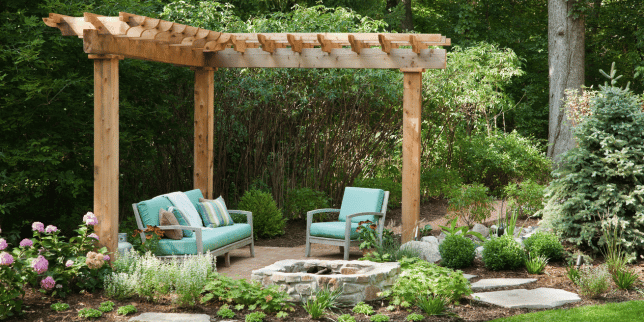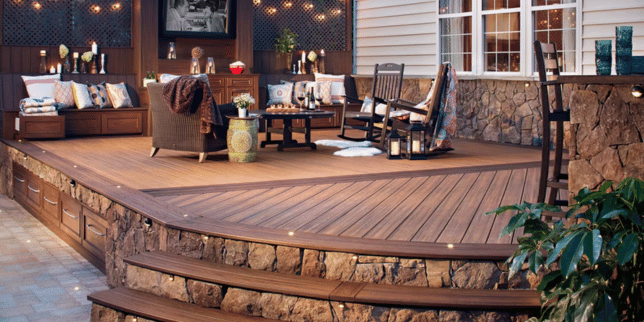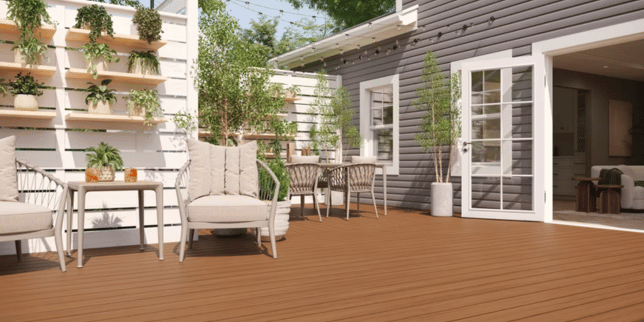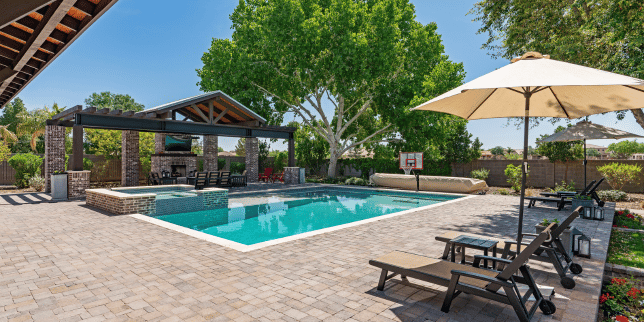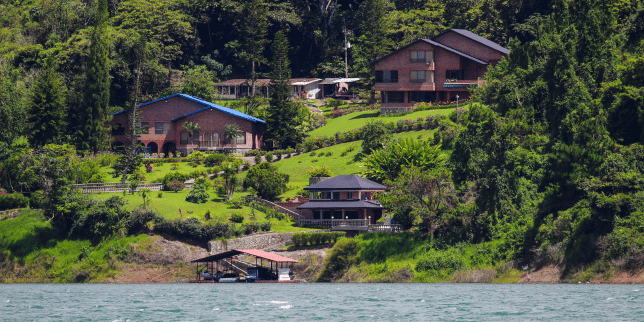The Ultimate Guide to Landscaping Terms for Your Home Remodel
August 9th, 2023
5 min read

Are you feeling overwhelmed with the prospect of landscaping your home but unsure where to start? Are you struggling to understand the jargon and terminology used in the landscaping industry?
Whether you're a seasoned gardener or a novice homeowner, navigating the world of landscaping can be challenging, especially when faced with an array of unfamiliar terms.
At Custom Built, we understand the importance of creating a beautiful and functional outdoor space that complements your home. With 15+ years of experience in the landscaping industry, we've witnessed the confusion many homeowners face when confronted with landscaping terminology.
That's why we've compiled this comprehensive guide to help you unravel the mysteries of landscaping terms, empowering you to make informed decisions for your home remodel.
In this article, we'll break down the essential landscaping terms, from hardscape elements to planting techniques, so you can confidently communicate with landscaping professionals and bring your landscaping vision to life:
1. Arbor
An arbor is a structure with an open framework that supports climbing plants, adding an elegant and enchanting element to your landscape. Arbors can come in many designs ranging from arched to gabled.
2. Backfilling
Backfilling is the process of refilling soil around plants or structures after installation or excavation.
3. Compost
Compost is a nutrient-rich organic material made from decomposed food waste and yard debris. It enhances soil health and provides essential nutrients for plants
4. Deadheading
Deadheading is the removal of faded or dead flowers from plants to encourage new growth and prolonged blooming.
5. Deciduous
Deciduous plants shed their leaves during the colder months, showcasing seasonal changes in your landscape.
6. Edible Landscaping
Edible landscaping integrates food-producing plants, such as fruits, vegetables, and herbs, into your landscape design. It offers both aesthetic beauty and practicality.
7. Erosion Control
Erosion control measures prevent soil erosion caused by rain or wind, preserving the integrity of your landscape.
8. Espalier
Espalier is a pruning technique where trees or shrubs are trained to grow flat against a wall or trellis in a decorative pattern.
9. Evergreen
Evergreen plants retain their leaves throughout the year, providing year-round color and foliage in your landscape.
10. Fertilizer
Fertilizer is a substance applied to soil or plants to promote healthy growth and provide essential nutrients.
11. Garden Bed
A garden bed is a designated area for planting flowers, shrubs, or vegetables, often bordered by edging materials.
12. Gardening Zone
Gardening zones are geographical regions classified based on climate and temperature, helping you choose plants suitable for your area.
13. Grading
Grading refers to shaping the land to achieve proper drainage and create a level surface for hardscaping and softscaping.
14. Hardscape
Hardscape refers to the non-living elements in your landscape design, such as walkways, patios, retaining walls, and pergolas. These structures provide the framework for your outdoor space, adding both functionality and visual appeal.
Hardscaping Elements
Hardscaping elements encompass a wide range of features, including:
- Pergolas: Open structures that provide shade and support climbing plants.
- Walkways: Pathways or trails that allow movement throughout your landscape.
- Fire Pits: Designed areas for outdoor fires, perfect for gatherings and relaxation.
- Patios: Outdoor living spaces typically paved with materials like concrete, brick, or stone.
- Retaining Walls: Structures designed to hold back soil and create different levels in your landscape.
- Water Features: Includes fountains, ponds, and waterfalls that add a soothing and serene atmosphere to your landscape.
15. Irrigation
Irrigation systems are essential for maintaining healthy landscapes. They deliver water to plants efficiently, ensuring they receive the right amount of moisture for optimal growth.
16. Knot Garden
A knot garden is a formal and geometric garden design featuring intricate patterns created with low-growing hedges and plants.
17. Landscape Design Software
Landscape design software allows professionals and homeowners to create digital blueprints and visualizations of their landscape projects.
18. Lawn Aeration
Lawn aeration is the process of perforating the soil with small holes to improve air, water, and nutrient circulation to the grass roots.
19. Moss Garden
A moss garden is a tranquil and serene landscape design that features moss-covered ground and rocks.
20. Mulch
Mulch is a material applied to the soil surface to conserve moisture, suppress weeds, and improve soil health. It can be made from various materials such as wood chips, bark, or compost.
21. Pollinator Garden
A pollinator garden is designed to attract and support pollinators like bees, butterflies, and birds, promoting plant fertilization and biodiversity.
22. Pruning
Pruning is the act of trimming and cutting back plants to promote healthy growth and improve their shape and appearance.
23. Rain Garden
A rain garden is a strategically placed depression in the landscape designed to collect and absorb rainwater runoff, reducing stormwater pollution.
24. Site Analysis
Site analysis involves assessing the conditions and characteristics of your landscape site, including soil type, sun exposure, and drainage, to inform your landscaping design.
25. Sod
Sod is pre-grown grass that is sold in rolls or squares. It provides an instant lawn and is a quick and efficient way to establish new turf in your landscape.
26. Softscape
In contrast to hardscape, softscape includes the living elements of your landscape, such as plants, flowers, trees, and shrubs. Softscape elements bring color, texture, and life to your outdoor environment.
Softscaping Elements
- Ferns: These elegant, shade-loving plants add a touch of serenity and a lush green backdrop to woodland gardens or shaded areas.
- Vines: Climbing gracefully on walls, trellises, or pergolas, vines add vertical beauty, shade, and can even attract pollinators to your garden.
- Annuals: Seasonal bursts of color, annuals are perfect for adding splashes of brightness to your landscape and can be easily changed each year for a fresh look.
- Perennials: With their ability to return year after year, perennials offer a continuous display of colors and textures, making them a popular choice for any garden.
- Ground Covers: These low-growing plants create a dense carpet-like cover, reducing erosion, suppressing weeds, and adding visual interest to the landscape.
27. Sustainable Landscaping
Sustainable landscaping focuses on environmentally friendly practices, such as conserving water, reducing waste, and using organic materials to create a harmonious and eco-conscious outdoor space.
28. Topiary
Topiary is the art of sculpting plants, typically bushes and trees, into ornamental shapes or designs, adding a touch of artistic flair to your landscape.
29. Transplanting
Transplanting involves moving a plant from one location to another within the landscape.
30. Uplighting
Uplighting is a lighting technique where light fixtures are placed below plants or structures to create dramatic, upward illumination.
31. Vertical Garden
A vertical garden, also known as a living wall, is a wall-mounted planter that allows you to grow plants vertically, saving space and creating an eye-catching display.
32. Zen Garden
A zen garden, inspired by Japanese aesthetics, is a minimalist and meditative space featuring sand, rocks, and carefully placed elements to evoke tranquility.
33. Zone Gardening
Zone gardening involves dividing your landscape into specific areas, or zones, based on factors like sun exposure, water requirements, and soil conditions. This approach ensures that each plant thrives in its ideal environment.
34. Zone Tolerance
Zone tolerance refers to a plant's ability to thrive in specific climate zones, ensuring successful growth and survival in your landscape.
Next Steps to Starting Your Landscaping Project
As we come to the end of The Ultimate Guide to Landscaping Terms for Your Home Remodel, we want to remind you of the initial challenge you faced – feeling overwhelmed by landscaping terminology and unsure where to begin with your outdoor project.
Throughout this article, we've provided you with a comprehensive breakdown of essential landscaping terms, equipping you with the knowledge and understanding to navigate the world of landscaping with confidence.
By familiarizing yourself with these terms, you're better prepared to communicate effectively with landscaping professionals and make informed decisions for your home remodel.
For the past 15+ years, we have been passionate about helping homeowners like you create stunning and functional outdoor spaces. We understand that landscaping is more than just a project; it's an opportunity to transform your home and enhance your lifestyle.
For more information on how to approach your outdoor living space remodel and additional remodeling terms to know, we recommend the following articles:
Christine is the Lead Designer at Custom Built, bringing over 10 years of experience in custom homes, full interior remodels, and landscape design from design-build firms in Oregon and Michigan. A University of Michigan Taubman College graduate, she develops initial concepts, floor plans, curated selections, and detailed construction documents, turning clients’ visions into expertly crafted realities while staying aligned with Custom Built’s mission to positively impact the community.












